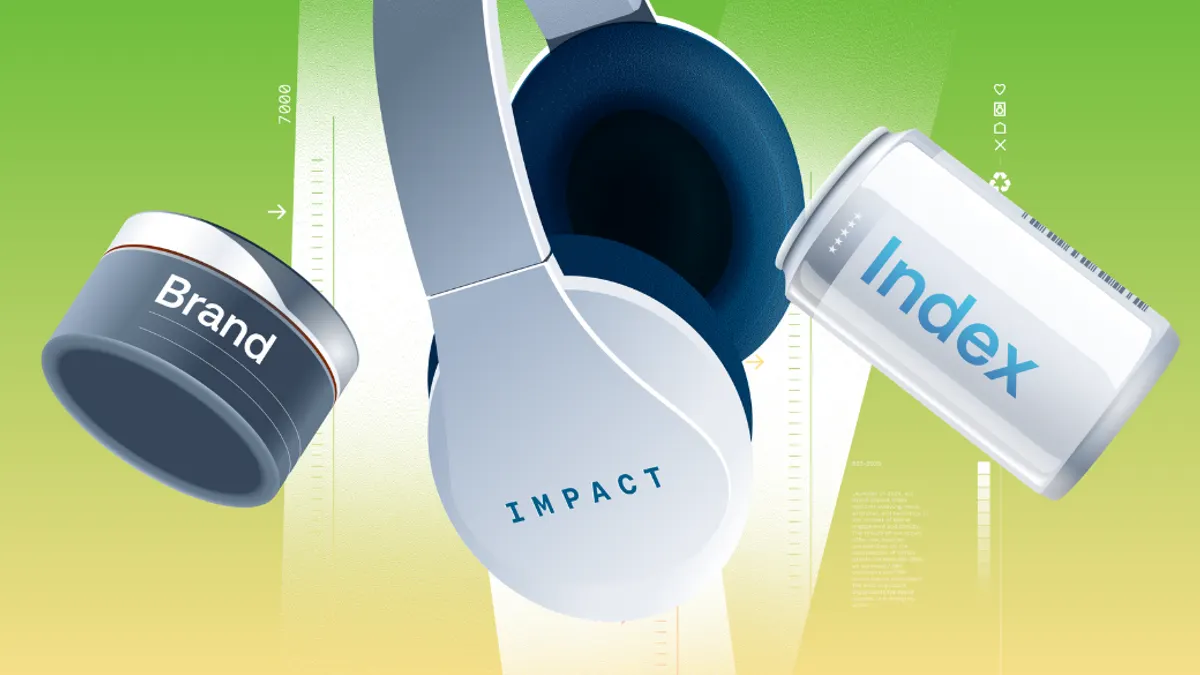In a rocky socio-economic climate, consumers increasingly look to brands to deliver a better future. But which brands do it best? We asked 7,000 US consumers to rank over 350 brands, demystifying the drivers of brand growth. Our concurrent survey of 360 executives at major global brands reveals a contrast between consumer preferences and leaders’ priorities.
Launched in 2024, our Brand Impact Index asks consumers to rank well-known brands against five core components: customer centricity, dependable delivery, intelligent innovation, conscious creation and community connection.
One year on, consumers have an even greater belief in brands, with 86 percent saying brands play an important role in delivering a positive human future (74 percent in 2024). When it comes to purchasing decisions, consumers don’t just want the best price – they look for honesty, rewards for loyalty and great experiences. And they expect brands to make a difference.
These desires are worth listening to. Top-scoring brands grow profit up to three times faster than competitors, boosting revenue and stock price. Consumers are also three times as likely to pay a premium for the top 25 brands versus the bottom 25. Half of consumers say they’ll spend more on customer-centric brands, with customer centricity emerging as the most influential component in driving brand engagement. But not all leaders are heeding the call.
Our leadership survey identifies two core groups of respondents: ‘shapers’, who pivoted their strategies following the US election and are investing in better growth and ‘stallers’, who are more hesitant and risk losing out.
Here, we explore the components and the strategies that top performers are taking to shape better growth and a better future.
Customer centricity
Customer centricity is about deeply understanding consumers in order to create the best products, services and experiences. But despite billions of investment in consumer experience technology, brands struggle to get to know consumers on a granular level.
Brands can get closer to customers through AI-powered platforms, human influencers, digital communities and traditional customer services teams – alongside a range of novel techniques. When consumer engagement insights are fed back to design, brands create more relevant, resonant products, services and experiences. Here, the following brands perform strongly: Rivian, Little Spoon, Apple, SoulCycle and SmartSweets.
Drilling down into the different leader cohorts, shapers are almost three times more likely to invest in customer centricity than stallers, reflecting shapers’ sharpness.
Dependable delivery
Over the past five years, supply chain disruption and global instability have threatened brands’ ability to deliver dependably. BMW’s new approach to supply chain management is just one example of how brands have responded. Brands have also invested in smart manufacturing, interoperable systems, sensors, dynamic modelling and automation.
Today, consumers expect more than dependability. They want always-on reliability in their specific moments of need and they want the best possible value. Top performers in this component include Google – so ingrained that it’s become a verb – and Band-Aid, UPS, Gerber and Zillow. These brands show up for consumers whenever and wherever they’re needed.
Across all components, leaders are investing most in dependable delivery. Priorities include excellent customer support and stress-free interactions. Unsurprisingly, the shaper cohort is more likely to minimize the impact of disruption on consumers and be transparent about issues and mistakes.
Intelligent innovation
In fluid markets, brands have to innovate intelligently. Challengers such as Rivian, this year’s winner, show that longevity doesn’t guarantee success. Oura, Wealthfront and Betterment shine here – all fast-growth disruptors with agile operating models.
Brands can access new markets, categories and consumers by reimaging solutions, combining science, human insight and emerging tech. Unilever’s R&D teams, for example, harness data through an AI-powered platform to fast-track innovation.
While the majority of leaders are building AI capabilities, only around a third are gaining a return on their investment. Fortunately, 60 percent of consumers say they’re comfortable using AI tools in brand interactions and 40 percent say AI-driven experiences justify premium prices. With the right approach, there’s an opportunity for brands to make the most of this positivity.
Disruptive technology, AI and personalization are the biggest priorities for leaders. Shapers are more willing to invest in intelligent innovation and more likely to experiment with innovative technologies including machine learning, new packaging and innovative ingredients.
Conscious creation
Me, you, then the world too. The underlying sentiment of last year’s research has carried through into this year’s Index – 77 percent of consumers say they lose respect for brands that put profit before planet.
While half of leaders recognize their responsibility to deliver wider societal value, this doesn’t always spark action. By rethinking resource use, ‘waste’ and materials science, brands can fuel a regenerative future while optimizing operational efficiency. Look at PulPac’s alternative to plastic, which has a 90 percent lower carbon footprint than plastic while costing the same or less to produce. Leading brands here include Orangetheory Fitness, The Honest Company and Urban Remedy.
Investment in conscious creation is typically low, but consumer enthusiasm for sustainability hasn’t gone away. Again, shapers are responding to the call. Compared to stallers, shapers are more likely to invest in sustainable strategies.
Community connection
Over three quarters (76 percent) of consumers say they choose brands that reflect their personal values and cultural identities. This alignment fosters loyalty and trust and enables brands to speak authentically about their efforts to build a better future.
All leaders agree that they operate in a polarized society and half accept their role in driving societal progress. However, they struggle to communicate their positive impact in a resonant way.
To forge deeper connections, brands can tap into existing communities or nurture their own. Sports and fitness brands such as CrossFit and SoulCycle perform highly in this component, capitalizing on shared interests and forming bonds.
Although consumers place great importance on cultural and values alignment, leaders are investing significantly less in community connection than in other components. Shapers are more likely to invest in community connection and more likely to give back to consumers, than the staller group.
Shape, don’t stall
Increasingly, consumers expect brands to deliver a better future – today and tomorrow. Brands that optimize performance across customer centricity, dependable delivery, intelligent innovation, conscious creation and community connection shape a better future and win big.
The golden ticket to consumers’ hearts is understanding them on a deeper level, drawing on human ingenuity, science and technology to provide authentic, meaningful experiences sprinkled with thoughtful touches. By reflecting and pre-empting consumer demand, leaders can shape a better future. Stalling isn’t an option.










